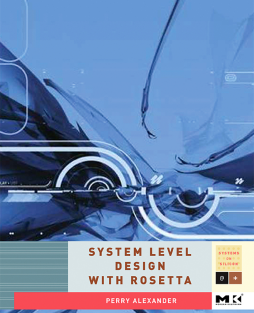
Additional Information
Book Details
Abstract
The steady and unabated increase in the capacity of silicon has brought the semiconductor industry to a watershed challenge. Now a single chip can integrate a radio transceiver, a network interface, multimedia functions, all the "glue" needed to hold it together as well as a design that allows the hardware and software to be reconfigured for future applications. Such complex heterogeneous systems demand a different design methodology. A consortium of industrial and government labs have created a new language and a new design methodology to support this effort. Rosetta permits designers to specify requirements and constraints independent of their low level implementation and to integrate the designs of domains as distinct as digital and analog electronics, and the mechanical, optical, fluidic and thermal subsystems with which they interact.
In this book, Perry Alexander, one of the developers of Rosetta, provides a tutorial introduction to the language and the system-level design methodology it was designed to support.
* The first commercially published book on this system-level design language
* Teaches you all you need to know on how to specify, define, and generate models in Rosetta
* A presentation of complete case studies analyzing design trade-offs for power consumption, security requirements in a networking environment, and constraints for hardware/software co-design
“The book is packed with clear code examples that explain all the language’s elements, both individually and in combination. Anyone who’s curious about Rosetta and, indeed, interested in a holistic approach to system-level design, should find this volume highly useful.
— David Maliniak, Electronic Design Online, December 18, 2006
